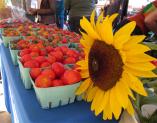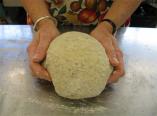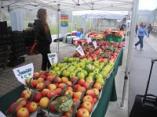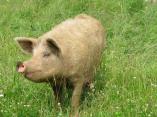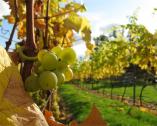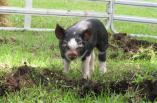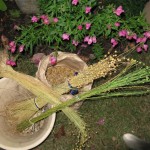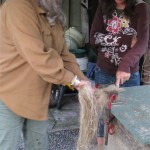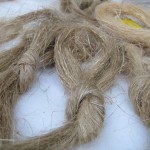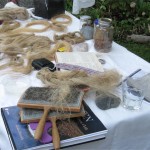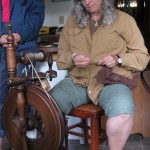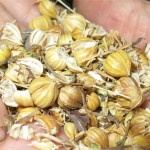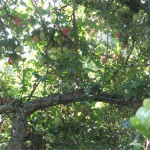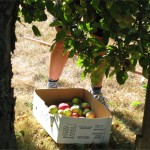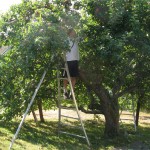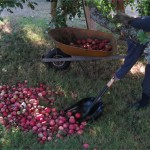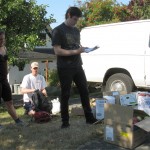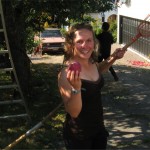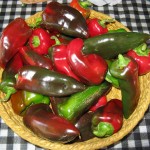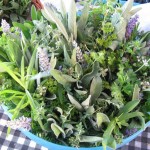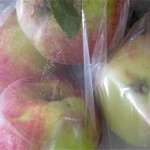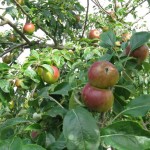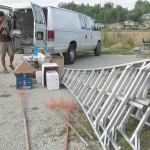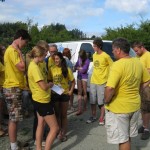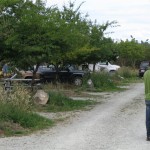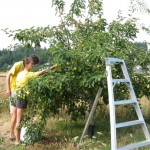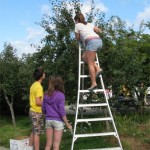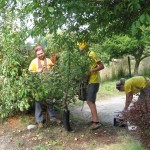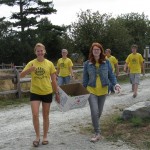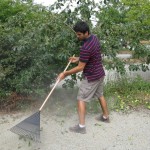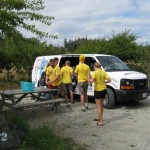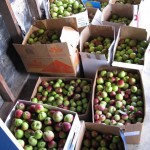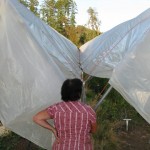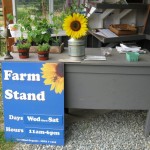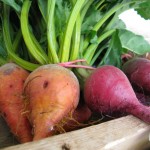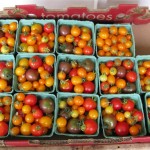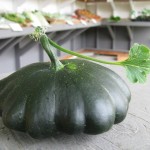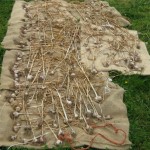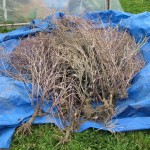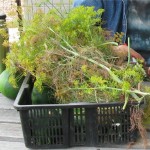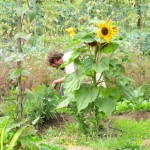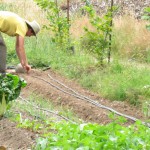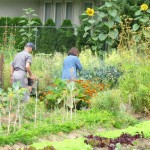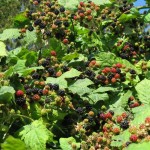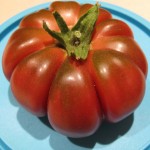 The LA Times has a good article on heirloom fruits and vegetables. The word “heirloom” is one that’s widely abused, but one that’s also treasured by many farmers and gardeners in these days of hybrids and genetic engineering.
The LA Times has a good article on heirloom fruits and vegetables. The word “heirloom” is one that’s widely abused, but one that’s also treasured by many farmers and gardeners in these days of hybrids and genetic engineering.
There is much to commend, for example, the complex flavour and charming fissures of an heirloom tomato over its supermarket version, round and hard and bland as a tennis ball. Here’s one of mine, as discussed on my gardening blog recently.
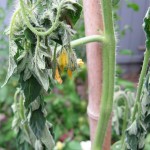 But woe, or perhaps that should be more woe, has befallen my tomato kingdom. I’ve had to pull up one of my beloved Auriga plants as it suffered sudden and catastrophic wilt. Was fine one day and flopping over the next. Because it perked up at night before flopping out again the next morning, and because the stem cross-
But woe, or perhaps that should be more woe, has befallen my tomato kingdom. I’ve had to pull up one of my beloved Auriga plants as it suffered sudden and catastrophic wilt. Was fine one day and flopping over the next. Because it perked up at night before flopping out again the next morning, and because the stem cross-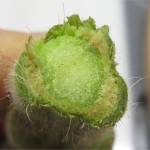 section revealed the tell-tale dark ring that shows fungal damage to its vascular tissues, I assume it was vascular wilt – which apparently means either Fusarium or Verticillium… although the plant didn’t show any yellowing of the leaves which is said to be a symptom of both these fungal diseases.
section revealed the tell-tale dark ring that shows fungal damage to its vascular tissues, I assume it was vascular wilt – which apparently means either Fusarium or Verticillium… although the plant didn’t show any yellowing of the leaves which is said to be a symptom of both these fungal diseases.
So I don’t know for sure, but I had to pull it up to be on the safe side. My tomato garden will have to move to a new location next year in any case, since several of the plants were infected with early blight (Alternaria solani). Aside from not growing in the (now contaminated) soil for several years, the main suggested procedure for controlling vascular wilt is to buy seed that has been bred for disease resistance. In the words of one source of advice, “The incidence of these diseases has increased with the growing popularity of heirloom, non-resistant, varieties.”
Well that’s the problem, isn’t it? The old conflict between taste and functionality. We may complain mightily that new food plant varieties are bred for longevity in shipping containers and on supermarket shelves rather than for taste or texture, but they are bred for other useful purposes as well. Disease resistance and other useful qualities like drought tolerance are key objectives in many plant breeding programs. Good breeding should aim to keep those most important qualities, the ones that made us love a food – flavour, nutritional content – while secondarily working on other aspects. But in a world that seems to have forsaken its tastebuds if a cheaper product can be had, this doesn’t always happen.
And maybe it’s not possible. If it’s not, then it means urban (and other) farmers who want to grow heirloom varieties need to be skilled and knowledgeable about avoiding the risks that can do in their crops. Gaining that skill and knowledge is the tricky bit in a busy world.
Meanwhile, I will have to look into wilt-resistant varieties that grow around here (apparently the resistance has to be localized as there are so many variations of the wilt fungi). Perhaps tempt fate and see how well they fare in the same garden bed. And how they taste!
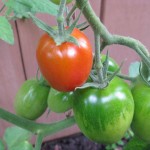 There are ambiguities around the term “disease-resistance” too; this was a term used about one of the tomatoes I’m growing this year, the Bearo plum. In fact it was said to b
There are ambiguities around the term “disease-resistance” too; this was a term used about one of the tomatoes I’m growing this year, the Bearo plum. In fact it was said to b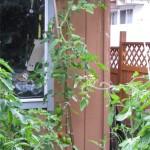 e highly resistant to blight, but I’ve managed to prove that its resistance hasn’t extended to early blight, unfortunately, as it’s one of the plants affected in my garden this year (so far only the leaves). But its enthusiastic growth and ample fruits make me want to try it again, and next time somewhere it can have room to reach for the skies.
e highly resistant to blight, but I’ve managed to prove that its resistance hasn’t extended to early blight, unfortunately, as it’s one of the plants affected in my garden this year (so far only the leaves). But its enthusiastic growth and ample fruits make me want to try it again, and next time somewhere it can have room to reach for the skies.
